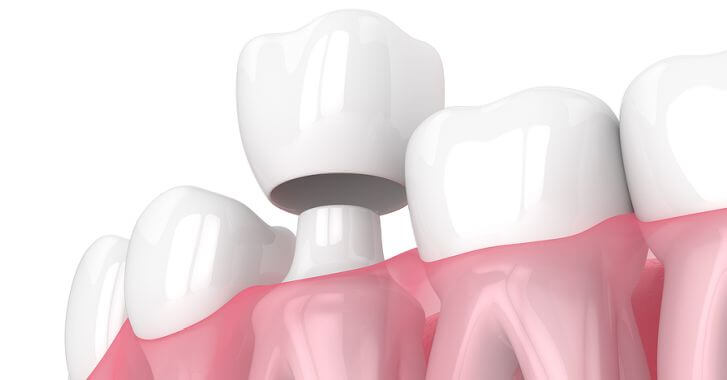Why Tooth Hurts Worse After Temporary Crown

Getting a temporary crown is a common dental procedure meant to protect your tooth while a permanent crown is being made. However, some people find that a tooth hurts worse after temporary crown has been placed. Here are some of the possible causes of temporary crown pain.
Possible Causes of Temporary Crown Pain
Temporary crown pain can be quite distressing. It’s important to know that this pain can stem from various sources, including the procedure itself, the fit of the crown, and how your tooth responds to the temporary material.
Sensitivity from the Procedure
The process of preparing a tooth for a crown involves removing some of the tooth structure, which can irritate the nerves. This irritation often leads to increased sensitivity and pain, especially when exposed to hot, cold, or sweet stimuli.
Improper Fit
A temporary crown might not fit as precisely as a permanent crown. If the crown is too high or does not align well with your bite, it can cause pain and discomfort. This improper fit can also lead to additional pressure on the tooth and surrounding gums.
Gum Irritation
The edges of a temporary crown can irritate the gums, causing inflammation and pain. This irritation is often due to the crown extending slightly below the gum line, which can lead to swelling and discomfort.
Bite Misalignment
If your temporary crown is not perfectly aligned with your bite, it can create pressure points. These pressure points can lead to pain when chewing or biting, making everyday activities uncomfortable.
Tooth Nerve Sensitivity
After the tooth is prepared for a crown, the underlying dentin is exposed, which can lead to increased nerve sensitivity. This exposure makes the tooth more susceptible to temperature changes and pressure, resulting in temporary crown pain.
Infection or Inflammation
In some cases, the pain might be due to an underlying infection or inflammation that was not fully addressed before placing the temporary crown. This can cause persistent pain that requires further dental evaluation and treatment.
How to Relieve Pain from Temporary Crown
Relieving pain from a temporary crown involves a combination of home care and professional dental advice. Here are several effective strategies to manage and reduce discomfort.
- Over-the-Counter Pain Relievers: Using over-the-counter pain relievers, such as ibuprofen or acetaminophen, can help reduce pain and inflammation. These medications can provide temporary relief and make it easier to manage daily activities.
- Avoid Hard and Sticky Foods: To prevent further irritation, avoid hard and sticky foods that can put extra pressure on the temporary crown. Stick to softer foods that require minimal chewing, which can help alleviate pain and discomfort.
- Maintain Good Oral Hygiene: Keeping the area around the temporary crown clean is crucial. Gently brush and floss around the crown to prevent plaque buildup and gum irritation. Using an antiseptic mouthwash can also help reduce inflammation and pain.
- Use Desensitizing Toothpaste: Desensitizing toothpaste can help reduce sensitivity by blocking the pathways that lead to the tooth nerves. Regular use of this type of toothpaste can gradually decrease sensitivity and provide relief from temporary crown pain.
- Adjust Your Bite: If you suspect that your temporary crown is causing bite misalignment, contact your dentist. They can adjust the crown to ensure it fits better and alleviate any pressure points that may be causing pain.
- Salt Water Rinse: A warm salt water rinse can help reduce gum inflammation and soothe pain. Mix half a teaspoon of salt in a glass of warm water and rinse your mouth gently. This simple remedy can provide temporary relief from discomfort.
- Avoid Extreme Temperatures: Avoid consuming very hot or very cold foods and drinks, as they can trigger sensitivity and pain in the affected tooth. Opt for foods and beverages at moderate temperatures to minimize discomfort.
- Use a Mouthguard: If you grind your teeth at night, using a mouthguard can help protect your temporary crown and reduce pain. Grinding can put additional stress on the crown, leading to increased discomfort.
If the pain persists or worsens, it’s essential to consult your dentist. They can evaluate the temporary crown, check for any underlying issues, and make necessary adjustments or recommendations for further treatment.
In some cases, severe pain after a temporary crown placement may indicate the need for a root canal. This procedure can address any deep infection or nerve damage that could be causing the pain.
Transition to Permanent Crown
Once the permanent crown is ready, having it placed can often resolve the pain issues associated with the temporary crown. Permanent crowns are custom-fitted, providing a better and more comfortable fit.

Understanding why a tooth hurts worse after getting a temporary crown is crucial for managing pain effectively. By following these strategies on how to relieve pain from a temporary crown, you can minimize discomfort and ensure a smoother transition to your permanent crown.
The information provided on this website, including text, graphics, images, and other materials, is intended solely for informational purposes and should not be used as a substitute for professional medical advice, diagnosis, or treatment.




)